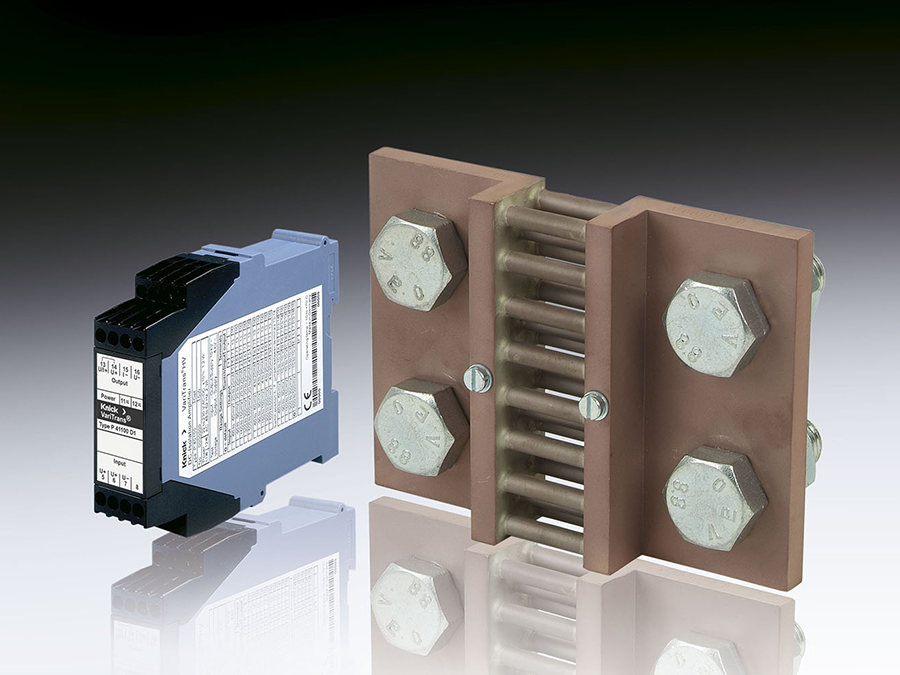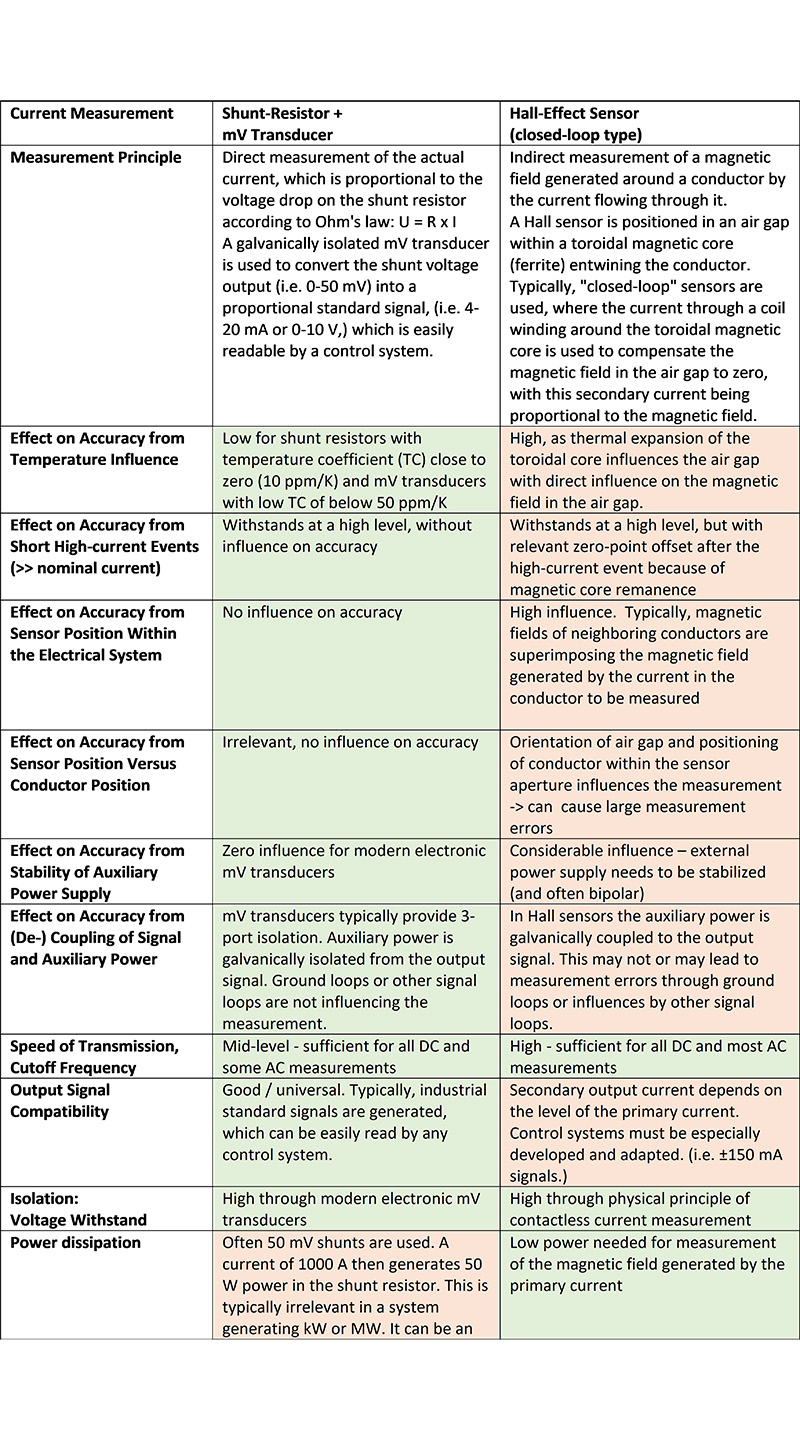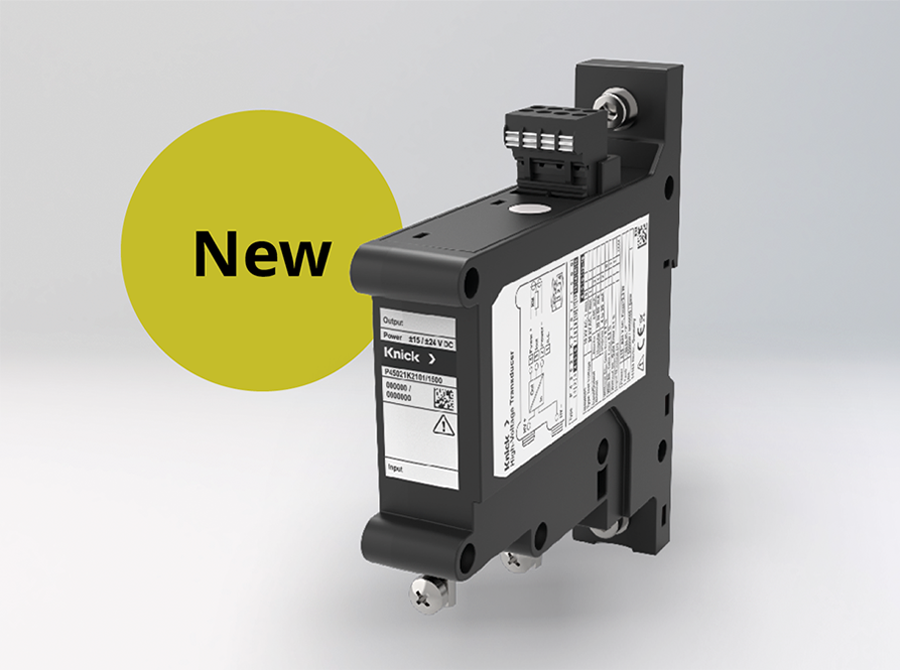인터페이스 기술
자세히 보기 | 제품 시리즈
인터페이스 기술
자세히 보기 | 제품 시리즈

There are many systems where measurement of large DC currents are needed for performance and safety. Two examples are static excitation and rail traction power. These current measurements are often made by one of two main principles: shunt resistor with mV transducer or Hall effect feed-through sensor.
Both sensor principles have existed for decades. For this reason, commercially available sensors of both principles can be regarded as time proven. However, each have their pros and cons, and are mainly tied to the physics of the principle used. If the disadvantage of a sensor is inherently bound to its physics, it is hard or impossible to overcome the problem, regardless of the number of iterations or design changes it has gone through.
If accuracy of the measurement is of particular importance, shunt resistor designs have relevant advantages. Even with documented accuracy specifications, far-field influences of neighboring conductors and sensor position make it almost impossible to assess the total measurement error of a non-contact Hall sensor.
However, if size minimization is necessary for an installation, then Hall effect sensors, with an overall smaller total footprint, could be considered. This is due to shunt measurement requiring a two-piece system, the shunt resistor, which would have a footprint directly proportional to the amount of current being measured, coupled with a corresponding mV transducer.
If ensuring accuracy with current measurements is of primary importance, then a shunt resistor with a corresponding mV transducer is likely the best option to consider. Due to the effects of various external influences such as temperature, positioning of sensor and conductor, stability and coupling of auxiliary power supply, and high current events that might be eventually seen, the initial and sustained accuracy of Hall effect sensors is very difficult to assess.
If other considerations within an application outweigh the benefits of accuracy seen with a shunt and mV transducer package, then Hall effect sensors could be further evaluated. This might include a project where space is limited to incorporate a shunt, and where this available space might heat up if a shunt were to be housed within it, due to power dissipation.
However, convenience with the installation and downstream maintenance should also enter into decision making. Here, the shunt and mV transducer show further advantages, due to compatibility with standard control systems, and ease with initial mounting and potential replacement.
The following chart offers a further comparison of the two technologies, with advantages for each technology highlighted in green, accordingly.


11월 2025
Interface Technology
Data Centers, High-Voltage Transducer, USA

11월 2025
Interface Technology
USA, Temperature Transmitter

9월 2025
Interface Technology
P45000, SIL
